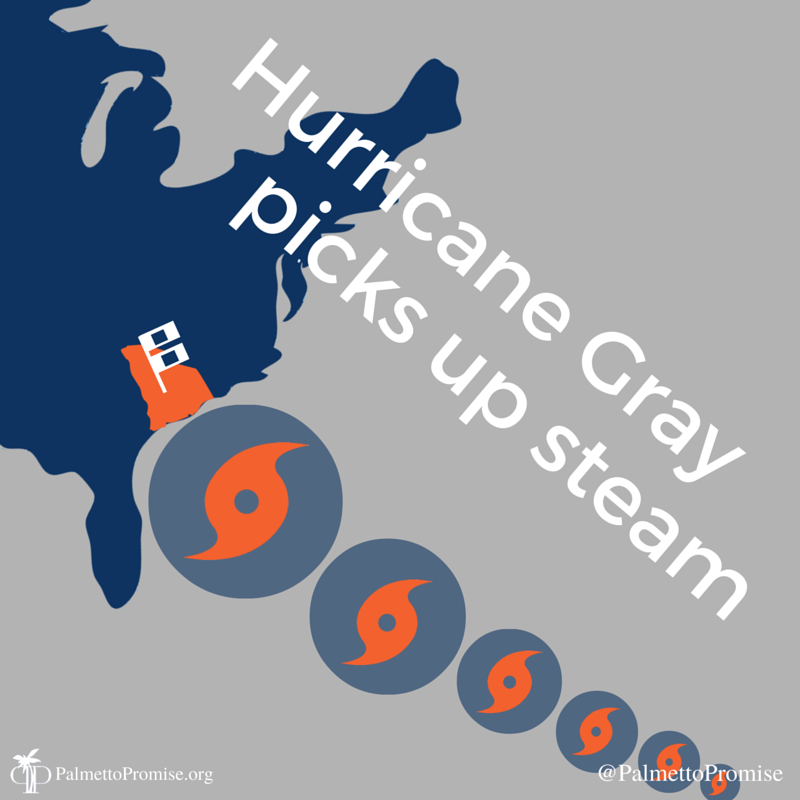“Hurricane Gray” Strengthens as Birth Rates Fall

Adam Crain
Palmetto Promise Institute has been warning South Carolinians about Hurricane Gray, a demographic storm that will barrel down on our state over the next two decades. This perfect storm of an increasingly aging population consuming more healthcare services and a growing demand for quality K-12 education will put a huge squeeze on the shrinking workforce who will be footing the bill. Not to mention the challenge of an education system not adequately preparing enough students for college or careers to fill the void.
This issue was highlighted in a recent Wall Street Journal article titled “Baby Lull Promises Growing Pains for Economy.” The author makes two key points: first, the recession of 2008 either delayed or put out of reach the opportunity and financial ability required to have children, causing a ripple effect through almost every sector of our economy, from a slow-down in the construction and sale of single family homes to dwindling sales at stores like Babies “R” Us. Second, though the recession is over, there are reasons to believe that the birth rate may not climb back to pre-recession levels of 2.1 children per woman any time soon, undoubtedly strengthening Hurricane Gray’s impact over the next decade.
The article’s author Janet Adamy explains the problem this way:
A swirl of social and economic factors is damping births in the U.S. Millennial women are delaying marriage as well as childbearing. A flow of Latino immigrants who helped lift the U.S. birth rate has tapered off. Women are now outpacing men in earning college degrees, a milestone that weighs on birth rates as it heightens the cost of women pulling back from their careers to have children. And young adults are less attached to organized religion than older generations were at their age, research shows, which is thinning the ranks of a group that tends to have more babies.
There’s also evidence that being a young woman in a weak job market forever reduces the chances of having children. A 2014 study by economists Janet Currie and Hannes Schwandt of Princeton University found that for women age 20 to 24, a one percentage-point increase in the average unemployment rate reduced their fertility in the short term by 6 conceptions per 1,000 women. By the time those women reached age 40, that early rise in the unemployment rate had led to an overall loss of 14.2 conceptions per 1,000 women. Most of that came from women who ended up not having any children at all.
She goes on to point to the long-term effects of this birth-rate decline and slow rebound:
The health system is reworking its maternity wards so that neonatal units are closer to where women have babies, a move that’s in part a response to the fact that more women age 35 and over are giving birth at its facilities. Other ripple effects take years to show up, such as the drag of having fewer young workers paying into Social Security and Medicare.
South Carolina can’t just bury it’s head in the sand: now is the time to prepare for the coming storm. By working to equip students in the classroom well for the challenges and opportunities found in the workplace and at college, by harnessing affordable education opportunities like Education Savings Accounts and digital learning opportunities like Course Access, we can work together to stem the tide of Hurricane Gray which threatens SC’s fiscal house.






